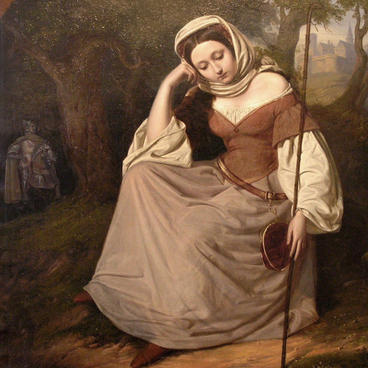Jan Porsellis, a painter of Flemish origin, is one of the founders of the realistic seascape. He began his path in art as a graphic artist producing geographical maps, book illustrations and engravings of ships. He then earned the title of master painter in Antwerp. He traveled extensively throughout Europe, but settled in Holland, a country closely associated with the water element.
In the 17th century, the seascape became a favorite genre of Dutch art. Porsellis devoted his artistic work to the sea, depicting it in different states: calm and stormy, in the rain and on a bright day. The artist brilliantly painted ships and vessels, knew their structure and rigging. His seascapes had a poetic atmosphere and abundant effects of light and weather. The master’s paintings were characterized by gentle, almost monochrome palette. Porsellis was primarily interested in the sea: everything else — people and the shore, ships and boats — was perceived by the artist as secondary elements.
The composition of the painting “Stormy Seas” is not clear at first glance. It captures what appears to be a random moment. Close and distant motifs contrast with each other, a principle that Porcellis often uses to shape the space. Two-thirds of the canvas features a rainy, gray Dutch sky. The lower third shows a stormy sea tossing the sailing ships. Yet water in Porsellis’ works, even with no ships, is not just empty space or a background, it is an independent element of the image.
Of all Dutch marinists it was Porsellis who was the first to study so thoroughly the phenomena of the water element. He realized that the North Sea is not emerald green, its waters change their colors depending on the weather: a full spectrum of green, blue, gray and brown. A talented painter, Porcellis was able to convey this range of colors in his many landscapes.
In the 17th century, the seascape became a favorite genre of Dutch art. Porsellis devoted his artistic work to the sea, depicting it in different states: calm and stormy, in the rain and on a bright day. The artist brilliantly painted ships and vessels, knew their structure and rigging. His seascapes had a poetic atmosphere and abundant effects of light and weather. The master’s paintings were characterized by gentle, almost monochrome palette. Porsellis was primarily interested in the sea: everything else — people and the shore, ships and boats — was perceived by the artist as secondary elements.
In order to create spatial depth and indicate the water mass, Porcellis used a certain arrangement of single vessels, a system invented by Jan Bruegel the Elder, the famous “velvet” Flemish. This technique became one of the main ones in the seascapes of the Golden Age of Dutch painting.
The composition of the painting “Stormy Seas” is not clear at first glance. It captures what appears to be a random moment. Close and distant motifs contrast with each other, a principle that Porcellis often uses to shape the space. Two-thirds of the canvas features a rainy, gray Dutch sky. The lower third shows a stormy sea tossing the sailing ships. Yet water in Porsellis’ works, even with no ships, is not just empty space or a background, it is an independent element of the image.
Of all Dutch marinists it was Porsellis who was the first to study so thoroughly the phenomena of the water element. He realized that the North Sea is not emerald green, its waters change their colors depending on the weather: a full spectrum of green, blue, gray and brown. A talented painter, Porcellis was able to convey this range of colors in his many landscapes.



